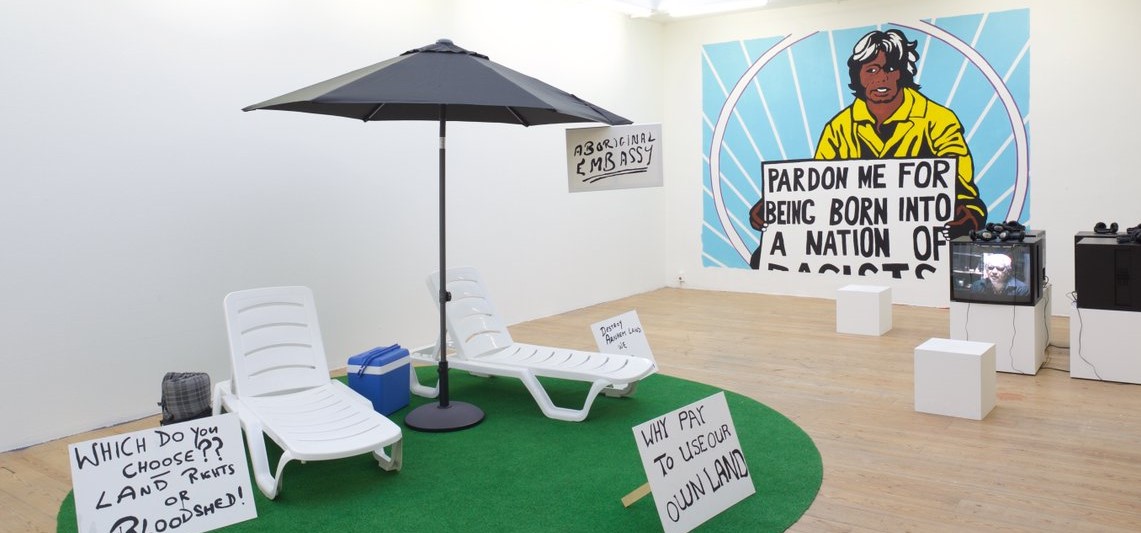
The Beautiful Struggle
What does it mean to be relevant? Vivian Ziherl kicked off the afternoon at the Stedelijk Museum with this inquiry; questioning for whom and why the art museum nowadays exists. As part of the Bell Invites exhibition at SMBA, the public programme Global Performance took place at the Teijn Auditorium in an arena made out of turf, where the invited speakers and public jointly sat down in a circular setting of small stools, benches and floor pillows. Egalitarianism was key, and no distinction was made between stage and seats; neither between speaker and listener, or museum director and student: the mic was open to all. Still, as a mode of structure nine people were invited to prepare a talk, introduction or a few words on the subject matter.
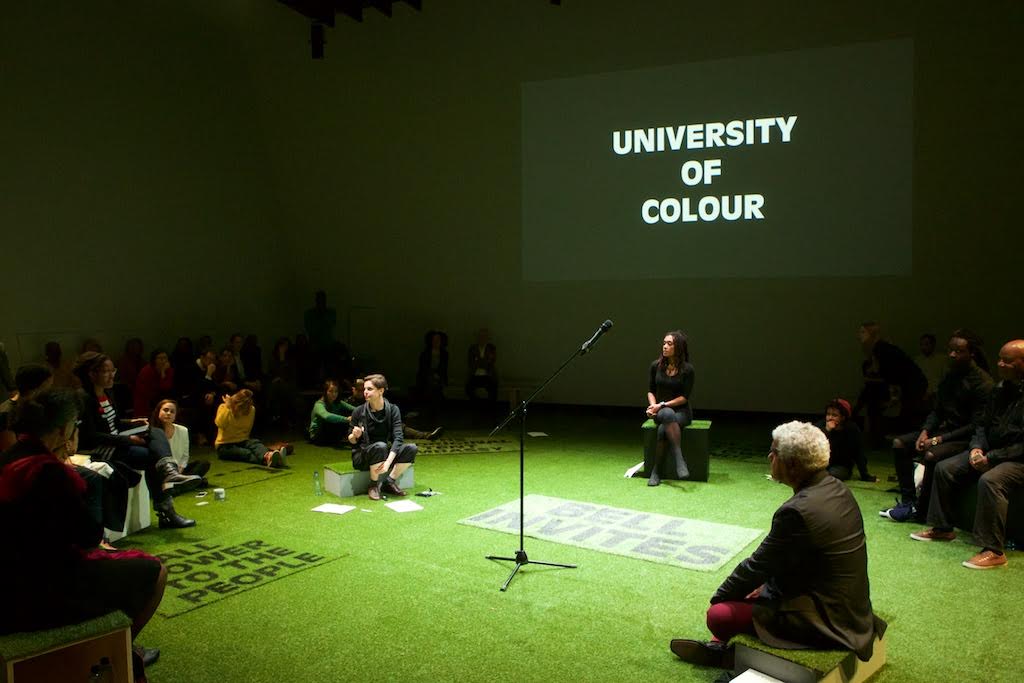
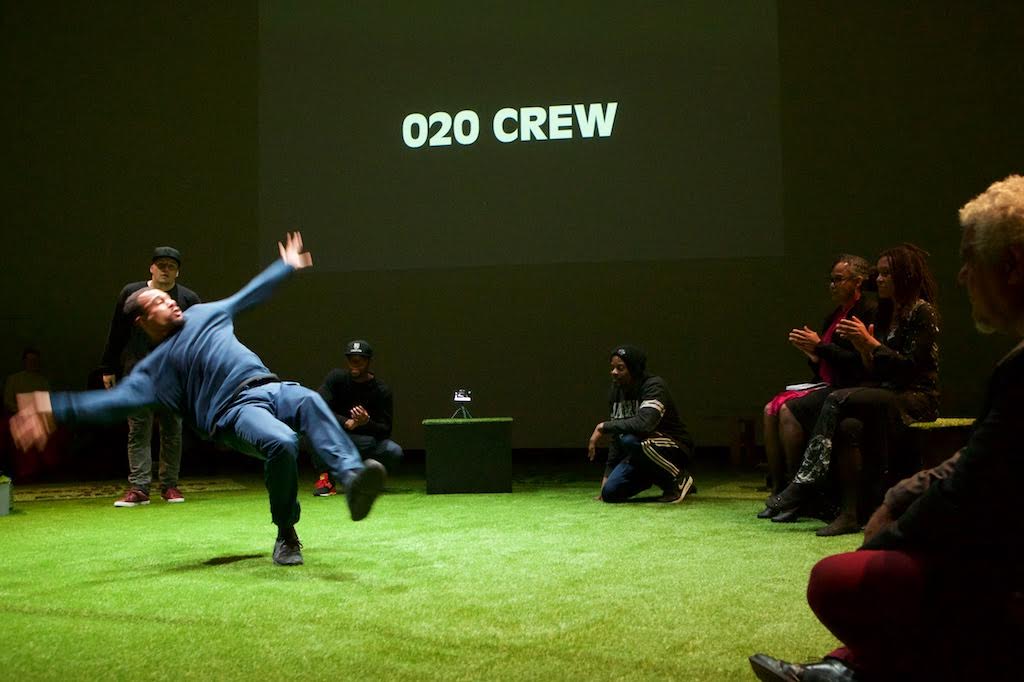
Bell Invites serves as a telling title; when invited by Ziherl on behalf of the Stedelijk Museum Bureau Amsterdam to undertake this exhibition, Australian artist Richard Bell responded by extending the invitation to friends and colleagues. The exhibition investigates the judgment, positioning and labels of different modes of expression and addresses at its core (who decides) what art is. During the installation at SMBA, people were invited to contribute – in line with the afternoon at the Stedelijk Museum. Colleagues, curators, artists, acquaintances, family and friends who felt connected to the subject matter made an effort to make it happen, while questioning notions on authorship and gatekeeping systems within the art world. In this sense Bell and co-curator Aruna Vermeulen (director of the Rotterdam based Hip Hop Huis), as well as Ziherl, question the systems of the art world by not acting as authors and presenters but as hosts of a space provided for others. In this sense the show attests for a strong, fairly courageous statement by Ziherl; to use her informed and in-crowd gatekeeping position to let people in, who would normally be considered outsiders. She provided a temporary home in both the Stedelijk Museum and its external satellite, SMBA, to people, practices and objects that are struggling to find acceptance within the contemporary art realm. The fact that Kees Keijer stated in his Parool review that Quinsy Gario’s ‘Zwarte Piet is Racisme’ t-shirts should become part of our national heritage, by means of De Rijksmuseum Collection, serves to affirm the relevance of both gesture and subject.
Hailing from Brisbane (Australia), Ziherl felt it was time to take responsibility and pay respect to her references, inspirations and environment. The subject is in need of attention, she noted. Especially in a city like Amsterdam where more than fifty percent of its inhabitants has some kind of foreign descent. It is a country which harbours both the descendants of overseas territories and the capitalised treasures/remnants of colonial endeavours in its important, internationally well appreciated museums. The two, up to this point, have not been able to connect on a structural basis nor level, which makes the issue of target audiences relevant. However, for the curatorial team of the hosting museum – Jelle Bouwhuis being the notable exception – this was no reason to show any interest by means of attending the programme in person. The public questioned their absence, while a young audience of various backgrounds showed up en masse – as well as a significant amount of Koninklijke Academie van Kunsten (KNAW) members.
During the afternoon Richard Bell was introduced by means of documentary footage in which the relatively recent situation of the Aboriginal people was presented. Hereafter an excerpt of one of his video pieces (Scratch an Aussie, 2008) was shown, in which first world white problems were verbally set forth, and Bell functioned as psychologist for those tormented souls. Bell featured himself, as he found it highly necessary to have black people present in artworks. He goes against an all-white art world, and creates evidence of the existence of other cultures, histories and people. In addition he constructs a visual possibility of becoming for a next generation, related to a statement by Stuart Hall and noted in the performance by Patricia Kaersenhout: ‘representation is domination’. Underrepresentation was topic of the activist gesture of the Aboriginal Tent Embassy. A major reference point for the SMBA show and Stedelijk Museum afternoon. Initiated by artists, actors and activists from the National Black Theatre movement in Sydney, The Aboriginal Tent Embassy was a combination of art and activism which functioned as a platform for topics of indigenous health, housing, and land rights. Bell paid homage to the Embassy by reimagining the gesture as an autonomous art piece, thereby exploring the historic and contemporary relationship between performance and protest. Furthermore his Embassy questioned the legitimacy of an (contemporary) art work. ‘Aboriginal art’ does not pass the test, alike posters, murals, and art that is presented in vernacular settings, aimed at particular local communities. The general museum context does not facilitate these modes.
The absence of examples, appreciation and options in the ‘high art’ framework could be considered one of the reasons music as mode of expression is of main importance to Dutch black culture. Bell invitees Akwasi, Hip Hop Huis and Farida Sedoc (Hosselaer) all are examples of this. The concrete jungle and the urban expressions from the other side of the Atlantic Ocean constitute important references and examples: from Wu Tang Clan to Crazy Legs and The Invisible Man (Ralph Ellison, 1952). The latter includes the metaphor in which the protagonist is confronted by the need for a minimum amount of black chemicals to make the white Liberty Paint more radiant, pure and ideal. Patricia Kaersenhout included this example as comparison to the art world, and the Stedelijk Museum programme that afternoon specifically, while she sang her own interpretation of what it means to be relevant.
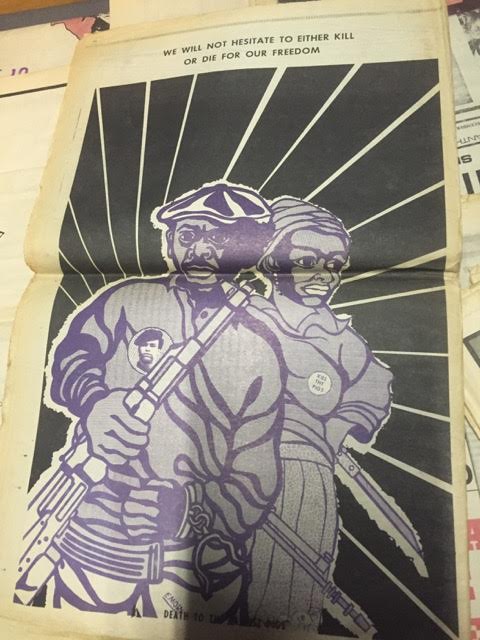
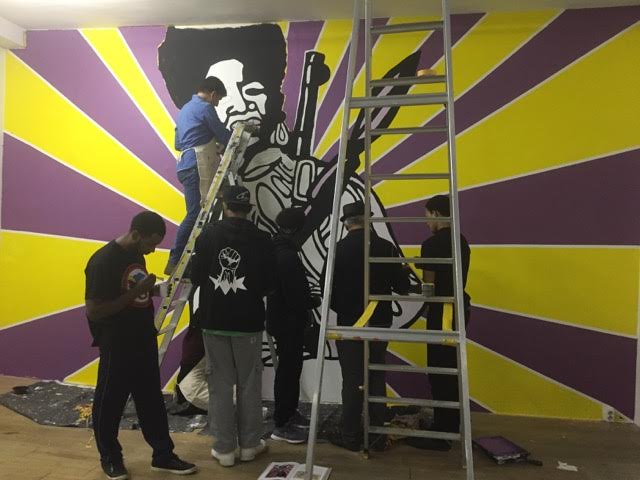
To become independent in its economies
According to Emory Douglas, prime guest and former Minister of Culture to the Black Panther movement, the Movement in its heyday aimed to become independent in its economies; the only way to keep wealth within one’s own community. This meant excluding imperialism, commercialism and general market forces. Nowadays these have prevailed and every possible source of economic gain is instantly adhered to by corporations, leaving individual actors to prosper, and exploited communities steadily lagging behind. Musician and actor Akwasi (Zwart Licht among others) would be a great example of this ‘method’. Being sponsored by liquor brands he proudly put forward his entrepreneurial spirit and the fact he never received a dime of subsidy money from the ‘grey old white guys’ who run the funding system. As pointed out by the audience by means of Afaina de Jong, Akwasi missed the fact that him being a 2015 Amsterdam Art Price nominee meant a relation with the Amsterdam Fund for the Arts (AFK) which is led by Clayde Menso – a man from Surinamese descent. Then the question arose what message does a role model convey by connecting oneself to a liquor brand, even when the money makes one ‘independent’. Aruna Vermeulen added that even though Akwasi himself might have never been subsidised directly; the venues he has been performing at, do get government-provided money.
She would know. As the founding director of a dance-based institution she became familiar with the modes of working within the arts field. Courage, confidence and a cheeky attitude lead to leadership: ‘it’s harder to spin on your head than become president of this country’ – or director of a culture institution for that matter. For the Hip Hop Huis it is highly important to be labeled a cultural institution. Back then, Vermeulen was convinced the HHH-cause was exceptional in its struggle for survival. As time went, her awareness of all art institutions constantly fighting for funding and relevance settled in. The struggle is common among the arts – here she found a friend in Charles Esche.
Esche: ‘becoming relevant to some, is becoming irrelevant to others’
Esche, director of the Van Abbemuseum in Eindhoven admitted that his main audience consists of white 60 year old females. So, to whom should his activities be relevant: his base audience, or the ‘general public’? He stated becoming relevant to some, is becoming irrelevant to others. Especially now, when public funding is rapidly diminishing and private cash and corresponding interests are increasingly taking hold of the arts; then, whose relevance is being served? Cash rules everything around us, including the modern museums, writing of history and current canon. The Van Abbe director managed to broaden the scope from mainly minorities, to economies and a general underrepresented public. Douglas and Esche agreed on The Black Panthers’ struggle for proper institutional representation, possibilities and space for minorities and underprivileged citizens is still as relevant today as it was back in the 70’s. The fight continues. The Bell Invites afternoon demonstrated the willingness of a young public to do so: to be continued.
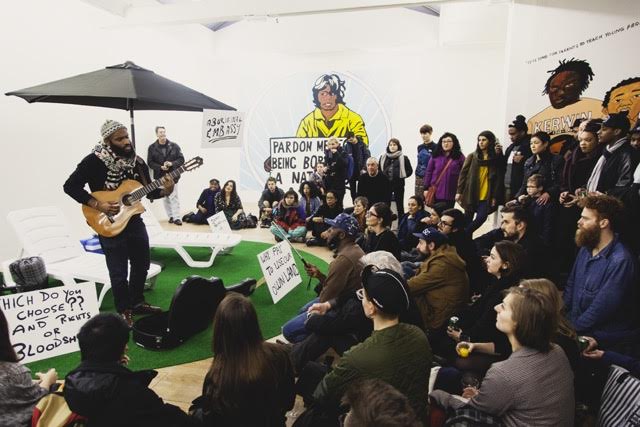
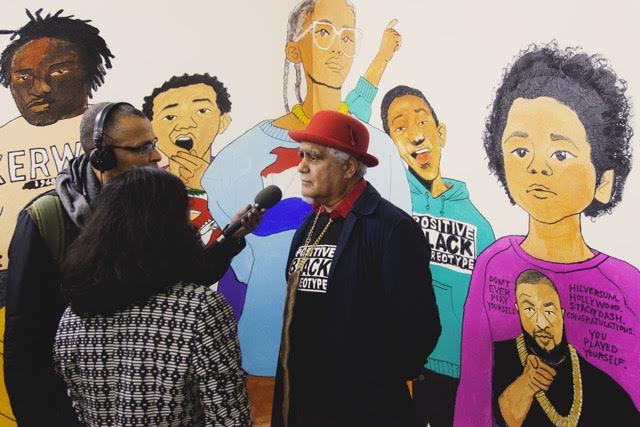
Bell Invites: Global Performance
February 6, 2016 at Stedelijk Museum Amsterdam
Akwasi, Emory Douglas, Farida Sedoc (Hosselaer), Patricia Kaersenhout, Ernestine Comvalius, Charles Esche, Jack Persekian, Aruna Vermeulen, Catherine de Zegher, 020 Crew, Quinsy Gario, Richard Bell and Vivian Ziherl.
Bell Invites
Stedelijk Museum Bureau Amsterdam
January 30 – April 3, 2016
Vincent van Velsen
is an editor for Metropolis M and curator at Stedelijk Museum Amsterdam


